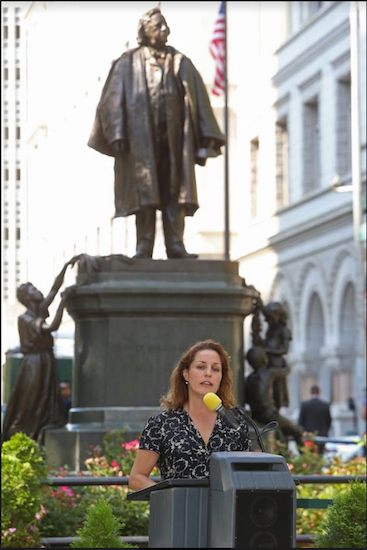Henry Ward Beecher monument restoration unveiled in Columbus Park
‘Adopt-a-Monument’ Program Brings NYC Parks Dept. & NYC Public Design Commission to Brooklyn Icon

Pulitzer Prize winning biographer of Henry Ward Beecher Debby Applegate speaks with the uncovered monument in the background. Eagle photos by Andy Katz
“’It is not well for a man to pray cream and live as skim milk’,” Dr. John Scibilia said, quoting the Reverend Henry Ward Beecher. Scibilia, executive director of the Plymouth Church of the Pilgrims, stood at the lectern set in the center of Columbus Park, just a few feet beyond bustling Johnson Street on Thursday, June 22. Before him were arrayed rows of people seated in collapsible chairs, and to one side stood members of an adult choir in white choral robes.
Behind Scibilia a golden cloth-covered edifice rose 15 feet into the air.
